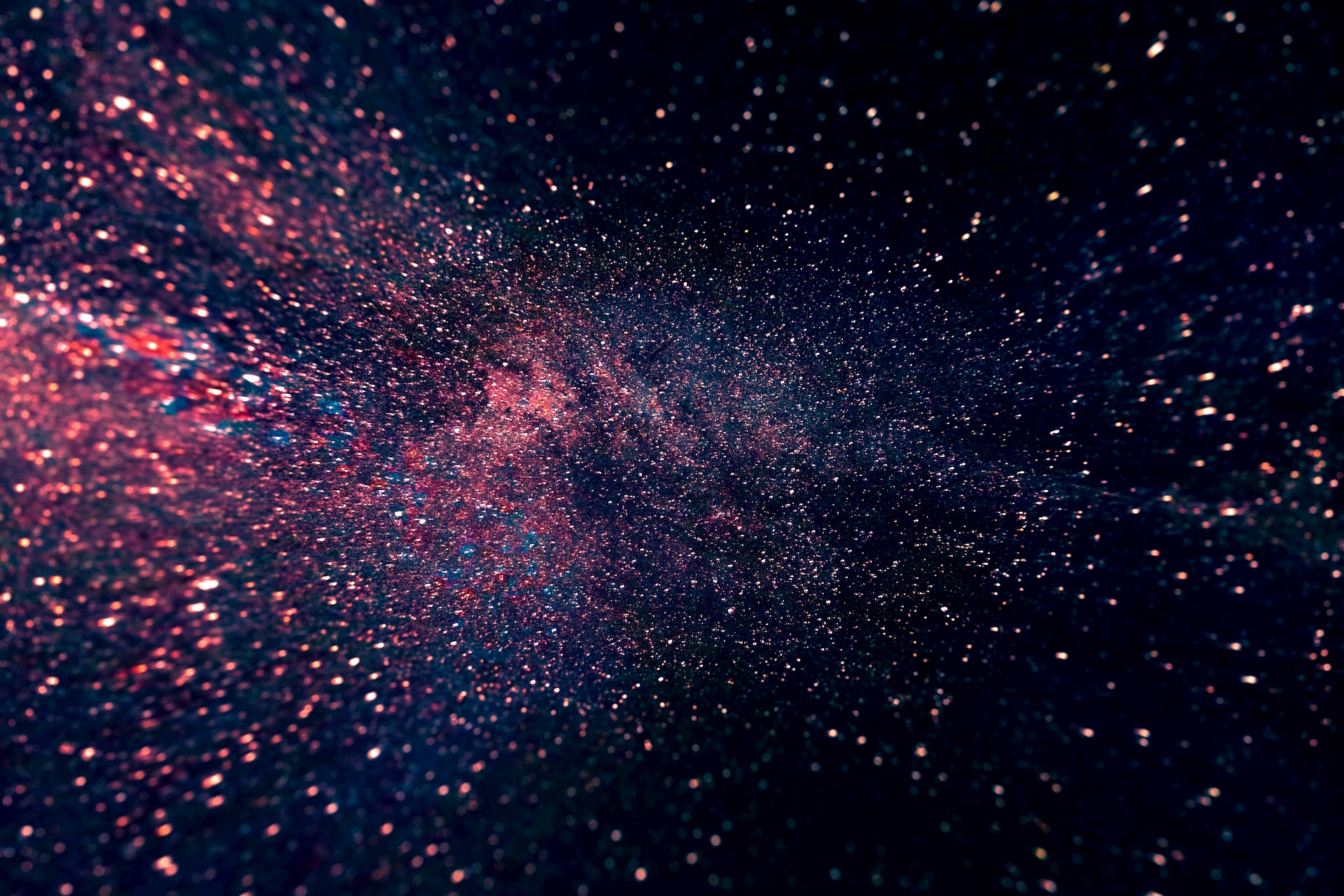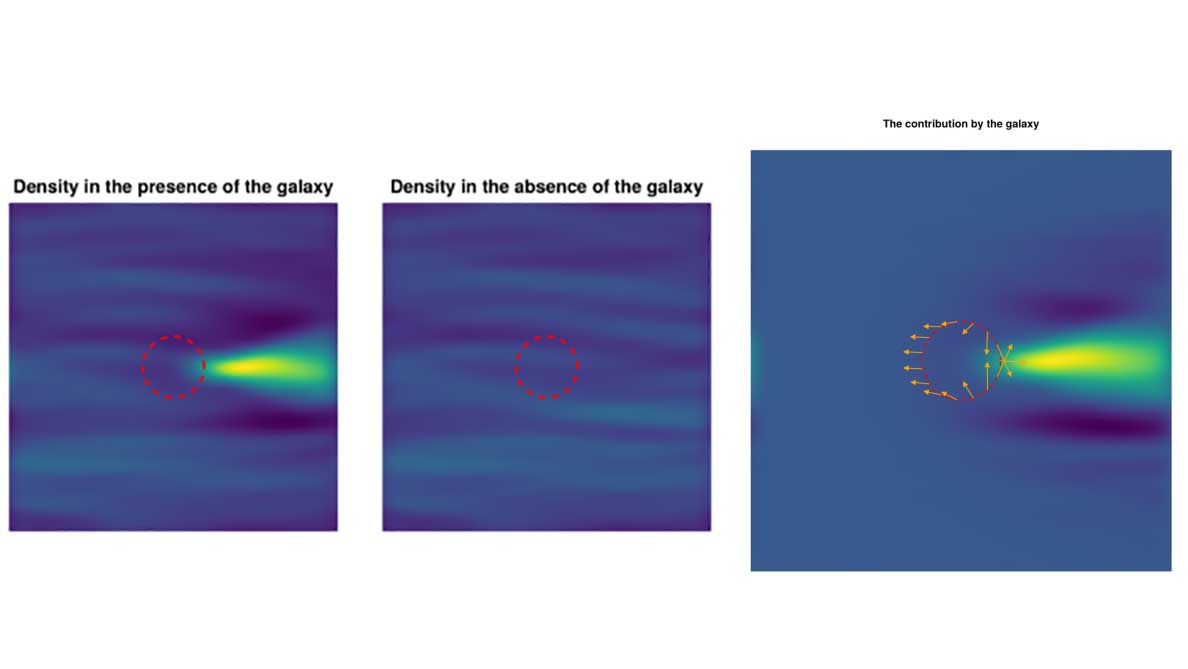Astronomers from the University of Tartu Observatory have developed a method for measuring the speed of dark matter, which can help reveal the secrets of the nature of this elusive substance, which makes up 85% of all matter in the universe. This dark matter is invisible, however, it was discovered due to gravitational effects.

To determine the speed of dark matter, astronomers study galaxies moving relative to it. Due to the movement of everything in the universe and the significant amount of dark matter, finding such galaxies turns out to be relatively simple.
Galaxies, as massive objects, attract all forms of matter, including dark and visible matter. When dark matter passes by a galaxy, the latter affects its trajectory by gravitational attraction. However, due to the time it takes for dark matter particles to change course, they fly past the galaxy before they feel an important influence. As a result, dark matter particles do not enter the galaxy, but move behind it. Beyond the galaxy, the density of matter increases, which causes the phenomenon of dynamic friction, slowing down the movement of the galaxy.

The force of dynamic friction depends on the velocity of dark matter particles and the time it takes for the galaxy to affect their trajectory. Slow particles lead to a higher density of matter near the galaxy, which causes a more pronounced slowdown.
Assuming that the galaxy that causes dynamic friction is of significant size, the excess density behind it creates different levels of conflict at different points in the galaxy. This differentiated friction can lead to an uneven galaxy shape, similar to shape changes on Earth due to tidal cycles initiated by the gravitational influence of the Moon.
The size of the dark matter particles is not important for the method, since their orbits are detected beyond the galaxy, regardless of their size. Accurate results may be difficult if dark matter particles are comparable in size to a galaxy, but current models of dark matter exclude this option.
Detecting lopsided galaxies is relatively simple, as they make up about 30% of all galaxies in the universe. The degree of lopsidedness and the depth of the study of the outer parts of the galaxy affect the ease of detection.
It is also important to note that the lopsidedness of the galaxy may be due not only to dynamic friction. Other factors, such as the effects of galaxy collisions or the constant influx of gas, can also affect it. In the case of collisions, the presence of the nucleus of another galaxy or a large stellar halo inside the universe can be detected. The lopsidedness of the galaxy caused by the influx of gas takes several billion years to restore its shape.
The next step for scientists will be to search for lopsided galaxies in the universe to study the speed of dark matter relative to galaxies.
Earlier, we reported on how neutron stars might turn out to be the best dark matter detectors.
According to techexplorist.com
Follow us on Twitter to get the most interesting space news in time
https://twitter.com/ust_magazi


